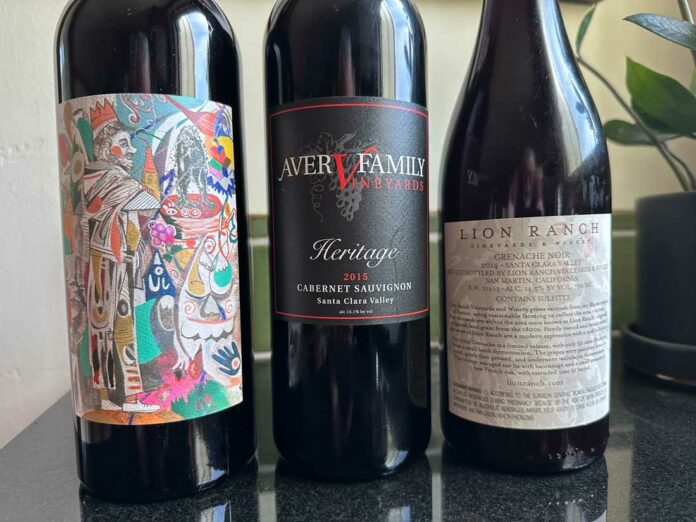
I’m back, and glad to see you are too.
I’m starting this column with some basic information about wine and our region because I’ve found out so few know about our local wine regions or really understand some of the basics of buying and enjoying wine. No, I’m not going to try to tell you how to enjoy wine, just a little bit about what you’re enjoying and where you can go to get that enjoyable wine.

In my last column I described how our region has the potential to be as good as what the Napa wineries produce; we just have to live up to that potential. In future columns I hope to show we’re doing just that. So in the meantime please be patient, that’s all coming.
So how important is it to understand what makes a good wine and where it comes from? Maybe at first it’s all an adventure but as you spend more time sampling wines you might start to identify favorite types of wines from specific regions and years, both domestically and abroad. You might want to find similar wines which you could identify by varietal, appellation and vintage. Don’t worry—if you’re not familiar with those terms keep reading and I’ll share a little about what they mean.
If you’re not really familiar with wines, and your local store doesn’t have a wine expert standing at the ready, a wine bottle label could tell you if that bottle might be similar to one you already know you like. There is some key information to help you understand what’s in that bottle and that information is heavily regulated by the federal government with similar international standards elsewhere so it must be important, right? Well, just ask a winemaker who’s waiting for federal wine label approval before it can be put out for sale and they’ll tell you it’s very important.
I don’t know of any particular order in which the different disclosures or product information must be presented but I can tell you it must be there.
Let’s start with the brand of the wine. This is where the winery can get pretty creative and wines have been known to be sold on the name and appearance of the label alone (yes, that includes me and the majority of wine consumers). It might be nice to leave some of those displayed on a shelf but we’re going to be more interested in what’s behind the label.
The winery name should be identified but you might find it on the back label.
The class or type of wine will tell you simply if it’s something like a red wine or if it’s based on a specific varietal. Okay, what’s a varietal? It’s the type of grape used to make the wine. Think chardonnay, cabernet sauvignon, etc… If the wine is made of 75% or more of a varietal then it can be identified as that varietal even if the remaining 25% is a blend of other varietals.
Few wines are made from one varietal so the true oenophile (wine connoisseur) might be looking at the blending varietals (I’m not there). Remember the movie “Sideways” and how the main character refused to drink merlot because it was primarily a “blending wine” for cabernet sauvignon? Note: he was wrong.
Next thing many look for is the appellation. That’s another fancy name for where it came from. This is where you look for the Napa appellation or if you’re educated here you’re going to want to see “Santa Clara Valley” or “Central Coast” on the label.
In the U.S. we use the term “AVA” which means American Viticultural Area. You can start with the larger area like “California” and then get into sub AVAs like “Central Coast” then further refined to “Santa Clara Valley” AVA which has two AVAs within it.
Each AVA has to have some distinctive characteristic to earn its title. Fun fact: the Santa Clara Valley AVA was championed by the Guglielmo family right here.
At least 85% of the fruit must be from that appellation to be labeled as such. There’s more along these lines like “Estate” and specific vineyard names which we’ll cover later.
The next thing oenophiles look for is the vintage. This is really for those that follow what years produced a certain quality of wine. Thanks to Mother Nature not all years are created equal.
I’d like to mention a “general rule of thumb”—red wines tend to get better with age and white wines tend to lose their luster over time. So if you know which white wines age well, great; otherwise try to stay below 10 years of aging and less for some varietals. For a wine to be labeled a certain vintage at least 95% of the wine must come from that year.
There’s a lot of disclosure stuff on a label that doesn’t mean much to me but some people are sensitive to sulfites so you can check that but just to let you know, not all suspected reactions to sulfites are caused by them.
So, I hope you are a little more comfortable looking for a wine based on all that information on the label or you can just buy the one with the coolest label, as long as it says “Santa Clara Valley’ or “Central Coast”…
See you around. Enjoy the moment but drink safely.








My husband and I have been tasting wines for about the last 6-7 years and don’t even consider ourselves oenophiles, but we do love wine. When we first started drinking wines, we did not even know that our area was so rich in wineries. I look forward to reading more of your series.
Great Job John!!